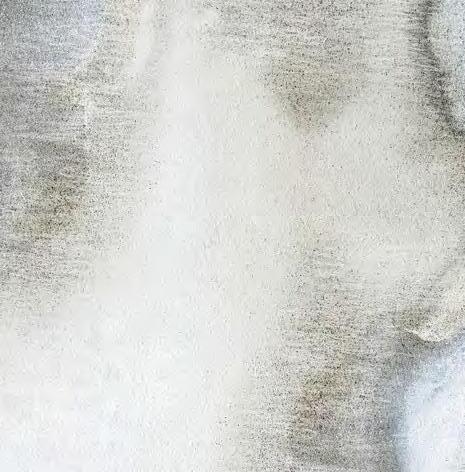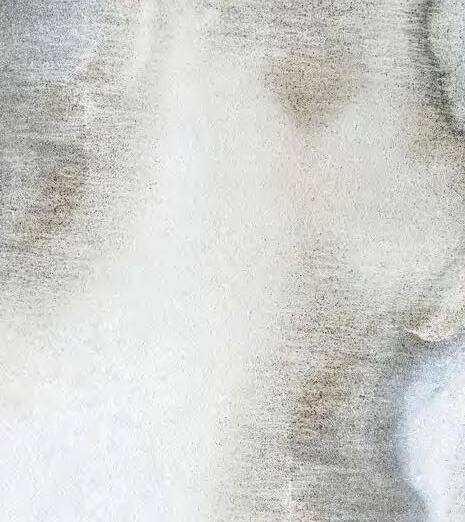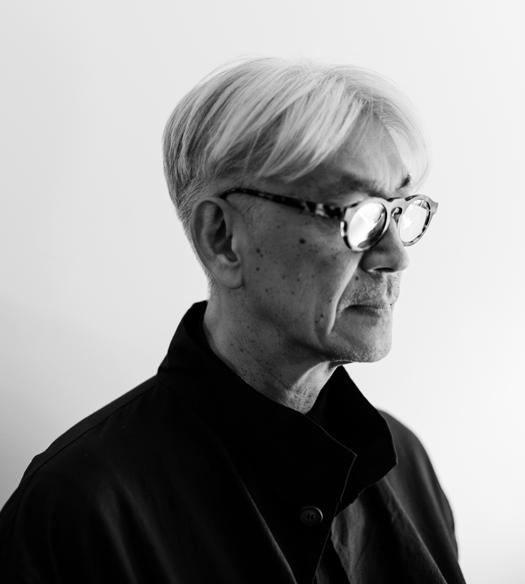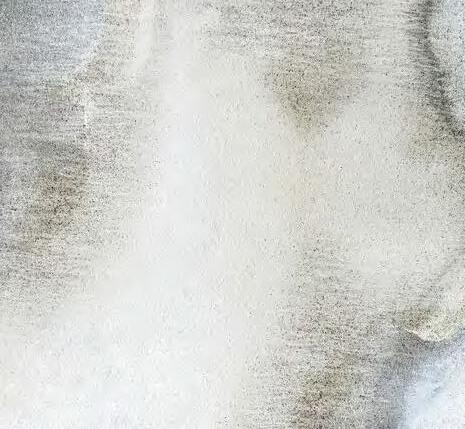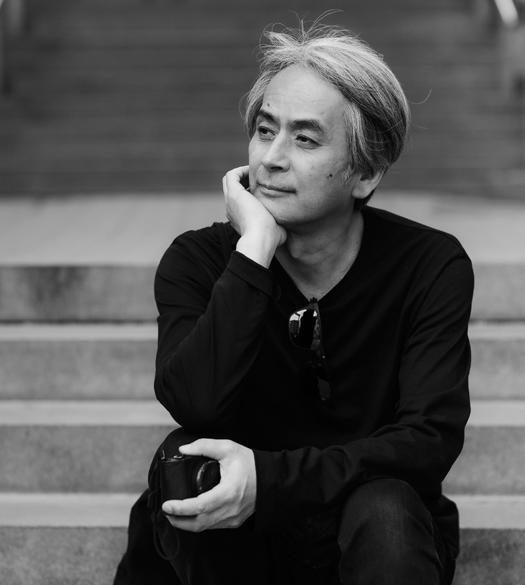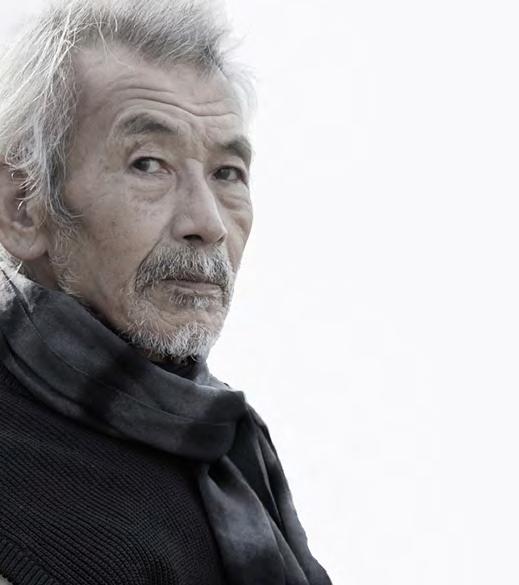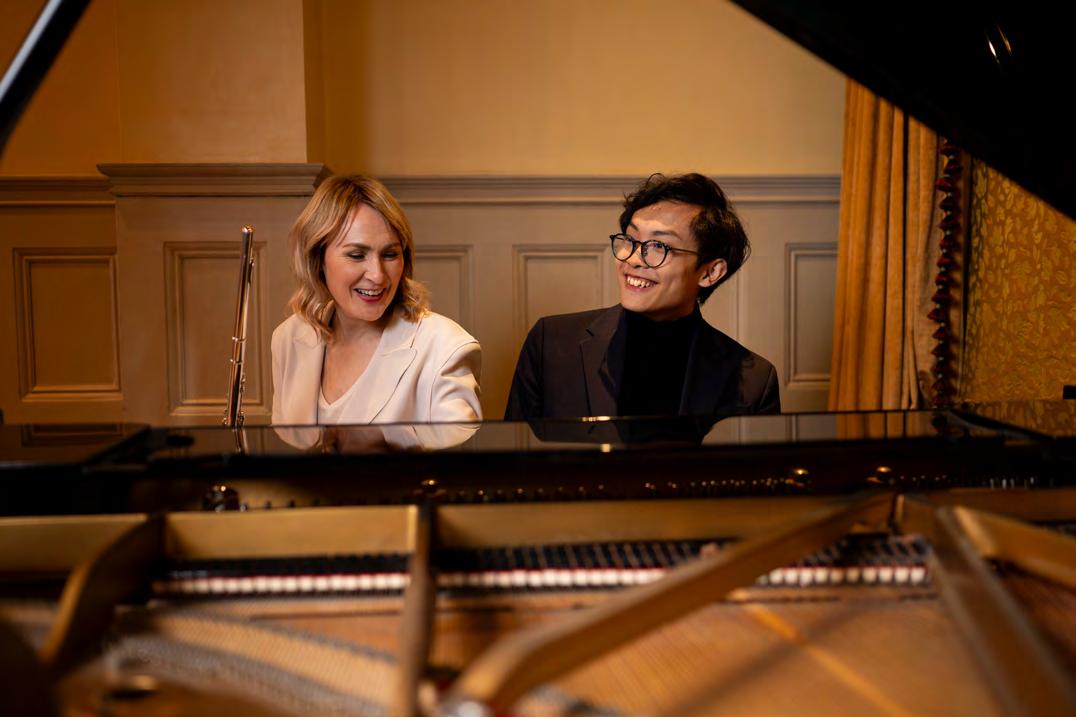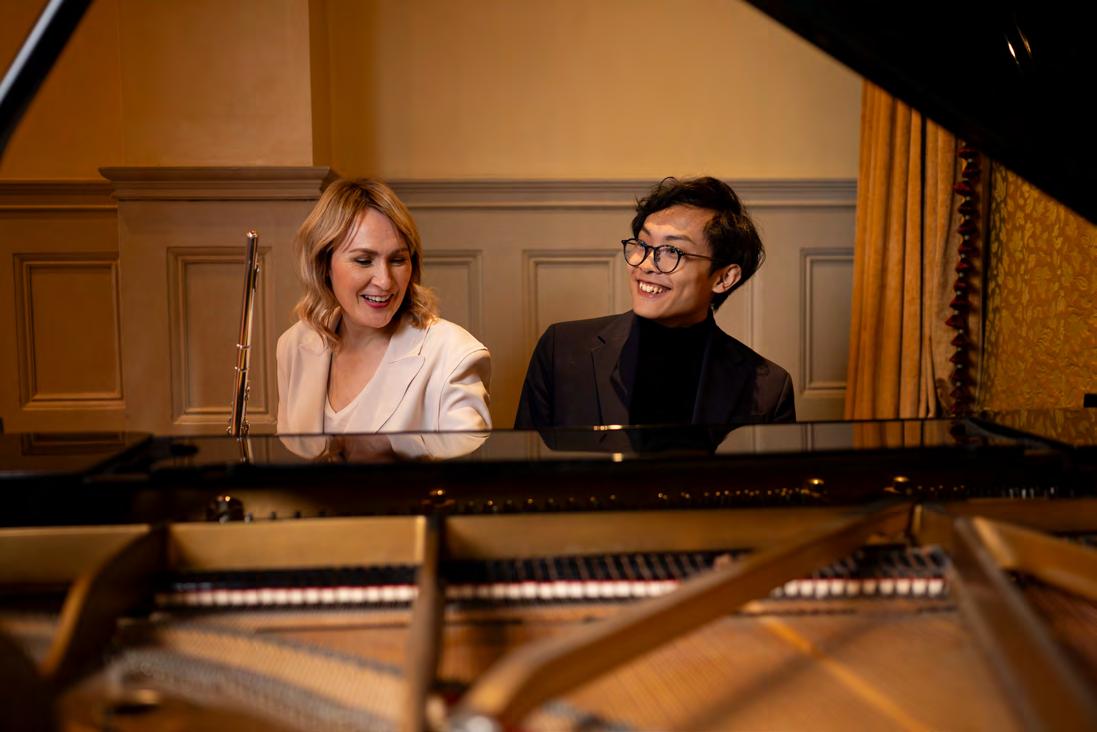TIME
by Ryuichi Sakamoto Shiro Takatani

Please

13.03-14.03.2025 / 8:00pm 15.03.2025 / 3:00pm
Lyric Theatre, The Hong Kong Academy for Performing Arts
Approximately one hour and 10 minutes with no interval
Occasional narration in Japanese with Chinese and English surtitles Latecomers will not be admitted
Cover Photograph © Yoshikazu Inoue
The artists in this programme flew to and from Hong Kong on Cathay Pacific Airways, the Official Airline of the 53rd Hong Kong Arts Festival
House Rules

※ Please switch off mobile phones and all electronic devices so they will not emit sound or light during the performance, disturbing the performers and other audience members.
※ Unauthorised photography or recording of any kind is strictly prohibited.
※ Please keep noise to a minimum during the performance.
※ The content of all works is independently produced by the creative team, and does not reflect the views or opinions of the Sponsor.
※ The content of this programme and the opinions featured in this publication are solely those of the artists/guest writers and do not represent the views or opinions of the Hong Kong Arts Festival (“HKAF”).
※ Ticket holders are strongly advised to arrive punctually.
※ No refunds or changes will be offered if ticket holders are refused admission due to late arrival. In the event of any dispute, the HKAF reserves all rights to make the final decision.
※ The English versions of the house rules on the HKAF website and front-of-house announcements will prevail in the event of any dispute.
Ryuichi Sakamoto: Opus
15.03.2025 (7:45pm-9:28pm) MOViE MOViE Pacific Place – House 3
Ryuichi Sakamoto: CODA
16.03.2025 (5:30pm-7:11pm) PREMIERE ELEMENTS – House 8
Artist Sharing A Time Travel with Sakamoto
21.12.2024 (Past event) Wake Concept Listening Room





Contents

Chief Executive’s Message
Chairman’s Message
Foreword
Note of Intent
Feature Article
Text
-Ten Nights of Dreams by Natsume Sōseki, “Dream #1”
-Kantan
-The Butterfly Dream by Zhuangzi
Creative, Production Team and Performers
About Ryuichi Sakamoto
About Shiro Takatani
Performers’ Profiles
About the Hong Kong Arts Festival Committee and Staff List
Acknowledgements
Message
I am pleased to congratulate the Hong Kong Arts Festival on the organisation of its 2025 season—the 53rd edition of one of the world’s most celebrated international cultural events.
This year’s Festival brings together over 1,300 international and local artists in some 125 performances covering music, dance, theatre, Chinese and Western opera and much more. The Festival-opening performance, by Italy’s Orchestra of the Teatro Comunale di Bologna, conducted by Maestro Donato Renzetti, features classic Italian opera arias. Renowned Chinese conductor Lü Jia and the China National Centre for the Performing Arts Orchestra, together with international pianist Zhang Haochen and soprano Song Yuanming, bring the Festival to a close in grand style.
Festival PLUS returns, presenting a wealth of artist-audience events, including masterclasses and workshops, backstage visits, guided cultural tours and more. Besides, the Festival’s “Young Friends” programme features school tours, pre-performance talks, arts demonstrations and other special events designed to engage local young people with a world of arts and culture.
The Government is determined to enhance the appeal of Hong Kong’s culture. To further solidify Hong Kong’s position as a vibrant Eastmeets-West centre for international cultural exchanges, the Government has launched the Blueprint for Arts and Culture and Creative Industries Development in November 2024, and has been actively working on the 71 measures under four key strategic directions as outlined in the Blueprint.
I am grateful to the Hong Kong Arts Festival and its dedicated team for their unremitting efforts in promoting arts and culture in Hong Kong, throughout the region and around the world. I am grateful, too, to the many sponsors and donors for their generous support for the Festival.
I wish this year’s Hong Kong Arts Festival another resplendent season of arts and culture, entertainment and memorable community engagement.

John KC LEE Chief Executive Hong Kong Special Administrative Region
Chairman’s Message
A warm welcome to the 53rd Hong Kong Arts Festival. As a leading international performing arts event, the Festival is continuing its mission of enhancing Hong Kong’s cultural landscape by showcasing over 1,300 exceptional international and local artists in more than 125 performances of over 45 unique programmes, as well as organising about 300 PLUS and educational activities for the community.
I would like to thank the HKSAR Government, acting through the Leisure and Cultural Services Department, for its annual subvention and matching grant which are not only essential to our operations, but also an important recognition of the work we do. I also want to thank The Hong Kong Jockey Club Charities Trust for its unwavering support during the past 53 years, as well as other corporate sponsors, charitable foundations and donors, whose contributions have enabled us to reach out to different sectors of the community and positively impact society through the performing arts.
My deepest gratitude goes to all participating artists for their dedication and exceptional performances. I also thank all HKAF staff, who worked extremely hard to bring this Festival to life.
Most importantly, I extend my heartfelt appreciation to all audience members for your participation and support. May you find joy and inspiration in our programmes and events.

Lo Kingman Chairman Hong Kong Arts Festival
Supporting Organisation:
Promoting international cultural exchange has always been a key objective of the Hong Kong Arts Festival. This year’s Festival continues to invite renowned global masters and internationally recognised young pioneers to present a range of worldclass programmes, respecting tradition while encouraging new, innovative initiatives. Many of these works are inspired by classic literature or offer rediscoveries of the original, bringing vibrant artistic experiences to the city.
We will also present a series of programmes centred around “fantasy and adventure”. These include works that seamlessly blend the arts with VR and AR technology, as well as captivating new creations that draw on traditional puppetry and circus performances. The Festival will also continue to support local artists and encourage exchanges to foster a vibrant and diversified platform for the arts.
We also remain dedicated to advancing arts education and audience building. Our PLUS programmes will present a series of thoughtfully curated masterclasses, backstage visits, post-performance artist talks and an exhibition. And our Young Friends and educational activities will continue to offer multidimensional arts experiences to students.
We hope that you will enjoy this year’s arts extravaganza prepared by the Hong Kong Arts Festival team.

Flora Yu Executive Director Hong Kong Arts Festival
The Hong Kong Arts Festival is made possible with the funding support of:



請支持您的藝術 節! Become a Supporter of Your Festival! P l ea se D on at e 請即捐 款 DONATE

Enq ui r ie s 查 詢: (852) 2828 4911
Note of Intent

You could say that TIME is musical theatre steeped in the traditions of Noh. With the help of Min Tanaka (dancer) and Mayumi Miyata (shō), the performance unfolds on a watery stage backgrounded by moving images of a dreamworld created by Shiro Takatani. Tanaka is a symbol of mankind, struggling to build a straight path across the water. Miyata represents nature, gliding effortlessly across the stage while playing her shō. As the storyline is quite fragmented, I will not be spoiling too much to reveal that despite Tanaka’s futile attempts to conquer nature, he ultimately succumbs to the water and meets a diluvial demise. From the outset, I wanted to create a myth about mankind and nature. I have also drawn on selections from three literary texts: Natsume Sōseki’s Ten Nights of Dreams, the Noh play Kantan and The Butterfly Dream by Zhuangzi—narrated by Tanaka in scenes where he is not busy building his path.

In The Gardener of Time, an essay included in Far Calls. Coming, Far!, Toru Takemitsu writes: “I dream of creating a single garden of music that stretches on for time infinite. Paying ample respect to nature, I will make my garden of time, full of mystery and metaphor.” Where Takemitsu aspired to create the music of infinity, I have sought to convey a different message—“Time is an illusion”—through this own garden of mine. The title of this performance is thus not an affirmation, but rather a rejection, of time.
The dreamscape setting for TIME was chosen for the reason that all properties of time are destroyed in our dreams. In Kantan, a young man seeking enlightenment experiences 50 years in the span of a five-minute dream. In The Butterfly Dream, philosopher Zhuangzi dozes off and dreams he is a butterfly, only to awaken and wonder if he was instead a butterfly dreaming it was Zhuangzi. TIME is my attempt to create a world that blurs the boundary between dreams and reality.
Text: Ryuichi Sakamoto English translation: Daniel González
Excerpted from How Many More Times Will I Watch the Full Moon Rise? (Shinchosha, 2023)
Feature Article
Dreaming of Nonlinear Time:
An Interview with Shiro Takatani

Sakamoto’s reflections on time can be traced back to the early 1980s. However, it was during the creation of his 2017 album async—after recovering from cancer— that the Japanese composer began contemplating the theatre piece TIME He sought to explore music that defied traditional temporal structures, creating compositions without a clear beginning or end. TIME continued Sakamoto’s investigations into time, boldly negating conventional notions of the concept and using dreams to illustrate the multiplicity of time.
In this interview, stage director Shiro Takatani discusses his final collaboration with the musical maestro and their endless exploration of time.

The “uncertainty of time” plays a pivotal role in this work.
People tend to envision time as unfolding on an orderly straight line with tidy correlations between cause and effect. When we think of time, we think of a clock, whose hands measure the regimented movements of the sun and moon.
During the performance of TIME, a path is created through the water on stage using brick-like blocks. This idea of using small building blocks to create something larger represents the origin of mathematics. Things become easier to understand when broken down and organised into small, manageable pieces. Many people today find comfort and stability in this way of living. But what if there were another, freer outlook on time? Perhaps the world would become more hospitable to a wider range of people with diverse sensibilities.
How hands-on were you in directing dancer Min Tanaka and shō player
Mayumi Miyata heading into the first rehearsal?
Tanaka, Miyata and Ryuichi Sakamoto are all outstanding artists. We all shared the same fundamental understanding of the piece. The only material provided at rehearsal was a bare-bones script. Everyone fully committed and filled out the performance with their own emotional touch. It was exciting to watch. I felt something new that I could not have anticipated from the script alone. The same is true for Noh theatre. No matter how many times you see a piece, you still discover something new.

© Yoshikazu Inoue
As Sakamoto said: “The goal is not to repeat the same performance over and over, but rather, to explore what arises on the spur of the moment.”
Yes. Unfortunately, he could not join us for the rehearsals in Amsterdam. But we sent him videos each day and he responded with notes. Sakamoto always preferred live performances. I remember him asking: “Can we introduce more spontaneity and get the actors responding to change as it happens on stage?”
You could entrust the performing to the performers.
I think Sakamoto wanted the performers to exist as themselves in that moment on stage. Sakamoto said: “I want to create a performance with no beginning and no end. One where audiences can arrive and leave when they please.” TIME opens with the sound of Miyata’s shō. During a recent discussion with Tanaka, Miyata interestingly said that the sound begins before the audience even hears it and continues after the performance has ended. More than the sound of her instrument, I think she was also referring to the sounds her body itself makes when playing or preparing to play. The performance begins before it starts and continues after it ends. I understood exactly what she meant. Indeed, where does a performance begin and end? If you watch the performance with attuned senses, you can begin to detect a kind of continuity. I hope audiences are able to share in this experience of time. Scenes transcend time and seamlessly merge, altering the audience’s own perception of space and time.
When Sakamoto first mentioned the title TIME, I began thinking about the relationship between time and space, and what it might feel like to perceive time as non-continuous. Sakamoto selected the texts—Ten Nights of Dreams Kantan and The Butterfly Dream—all stories about dreams. I think he chose these texts because in the dream world, time is not sequential. Our dreams feel strangely seamless; stories nested within stories. But we can also feel time distort in the reality of our waking lives.
During the pandemic, I went to China to help Sakamoto set up his exhibition there and had to quarantine for three weeks. When I arrived at the hotel and walked up to the reception desk, I was surrounded by staff wearing white protective suits. When I emerged to check out three weeks later, I encountered the same exact scene again in the lobby. It felt like the time I spent in quarantine had simply evaporated. When I messaged as much to Sakamoto, he replied: “Yes, that’s it! Remember that feeling!”

Discrete time is expressed here as a dream.
Sakamoto spent a lifetime making music.
As music is truly the art of time, it should have a beginning and an end. As a nonmusician, I can’t wrap my head around how music could exist if time wasn’t linear. But I think Sakamoto wanted to explore these further possibilities for sound and composition in a framework outside linear time.
Daniel González
English

Ten Nights of Dreams by
Natsume Sōseki
“Dream #1”
I had this dream.
I was sitting with my arms crossed at the bedside of a woman. Laying face up, she told me in a quiet voice that she was going to die.
Her long hair was fanned across the pillows, framing her slender face, so gentle in its shape.
The warm colour of blood shone plainly through the fair skin of her cheeks, and her lips were persistently red.
Not the mien of a woman on the verge of death.
But when she said that she was going to die, her quiet voice was certain.
I realised this was it, that she was dying.
Glancing down at her, I asked if she was sure that she was dying now.
Wide-eyed, she answered yes, that she was dying.
Her eyes were large and moist, orbs of blackness fringed by long eyelashes. Deep within the total blackness of her eyes, I saw my own reflection, all too clearly.
A minute later, she spoke up.
“When I die, I want for you to bury me.
Dig my grave with a big pearl oyster shell. And mark my plot with a piece of shooting star.
Then wait there for me, by the grave. I promise I’ll return.”
But when will you return, I asked.
“The sun will rise as surely as the sun will fall. Rising only to fall again.
Can you wait for me while the sun crosses the sky—from east to west?”
I nodded silently.
Her quiet tone grew more emphatic.
“Good,” she said. “Then wait for me a hundred years.
If you can sit beside my grave and wait for the next hundred years, I promise I’ll return.”
I said I would be waiting.
But now I saw that the reflection I had seen inside her eyes had turned to chaos.
As when a quiet pool is shaken by disturbance. Her eyes snapped shut.
Tears slipped from her lashes and down her cheeks.
She was dead.
Out in the garden, I dug a grave using a big oyster shell, the lip of which was keen enough to slice the earth.
With every scoop, the moonlight glimmered from the inside of the shell. I could smell the moisture of the ground. In due time, the hole was deep enough to lay the woman down inside.
I sprinkled shellfuls of loose dirt over her body.
With every toss of earth, the inside of the oyster caught the moonlight.
Next I found a piece of shooting star and set it carefully atop the mound of earth. The piece of star was round; it must have lost its edges during the long tumble through the heavens.
When I placed it on the grave, I felt a warmth suffuse my chest and hands.
I sat down on a patch of moss.
Knowing I would be here waiting for a hundred years, I crossed my arms and gazed upon the rounded hunk of star.
Before long, the sun rose in the east, like she had said it would.
A big, red sun traveling west, like she had said, and sinking red as ever.
One day down, I told myself.
At length, a crimson vast sun snuck over the horizon, working its way overhead and down again.
That makes two.
I lost track of the number of red suns that I had watched go up and down, one after another.
No amount of tallying could stop the endless train of red suns tracking overhead.
And yet a hundred years had far from passed.
Once moss had crept over the piece of star, I finally decided that the woman had deceived me.
That instant, a green sprout poked from underneath the star rock, leaning towards me as it grew.
Growing before my very eyes, it only stopped when it had reached my chest.
A moment later, the trim bud dangling from the tip of the long stalk, slightly askew, burst into flower.
A brilliant white lily tipped before my nose, so fragrant that I felt it reach my bones.
A speck of dew dropped from the sky. It knocked the flower, set it bobbing.
I brought my lips to its white petals just before the chilly dewdrop fell.
When I withdrew from the lily, my eyes turned to the atmosphere, and I saw the morning star aflicker.
“So,” I told myself, “a hundred years have passed.”
English translation: Sam Bett

Kantan Summary
“I have lost my way in this cruel world. When will I awaken from this dream?”
In the land of Shoku, there lived a man named Rosei, who led an idle life.
One day, hearing that a great monk could be found on Flying Sheep Mountain in the land of So, he decided to pay him a visit, in the hopes of discovering a path to enlightenment.
Along the way, he came to the village of Kantan.
Though the sun was high, he opted to stop for the night at an inn.
The woman who ran the inn offered him the Pillow of Kantan, explaining that those who dreamt upon it would experience enlightenment.
Rosei accepted the pillow and took a nap while the innkeeper prepared a meal of millet.
Soon a royal emissary arrived to inform Rosei that the king of So had ceded him the throne.
Rosei boarded a sedan chair and was carried to paradise on earth, a magnificent, expansive palace where he was received as king.
Fifty years passed in the blink of an eye, and Rosei was given a mystical elixir, that he may live a thousand years.
Banquets in his glory continued night and day, and Rosei even danced before his subjects.
Suddenly he found the crowds had gone. Rosei had awakened from his dream.
The innkeeper announced that the millet was ready.
Rosei staggered to his feet.
Fifty years of glory had passed in the time it took to cook the millet—a dream that came and went while he was waiting for his supper.
Rosei had discovered the pathway to enlightenment, thanks to the Pillow of Kantan and the dreams that it had shown him.
He now saw that the world we know is but a dream. And thus he made his journey home.
English translation: Sam Bett

